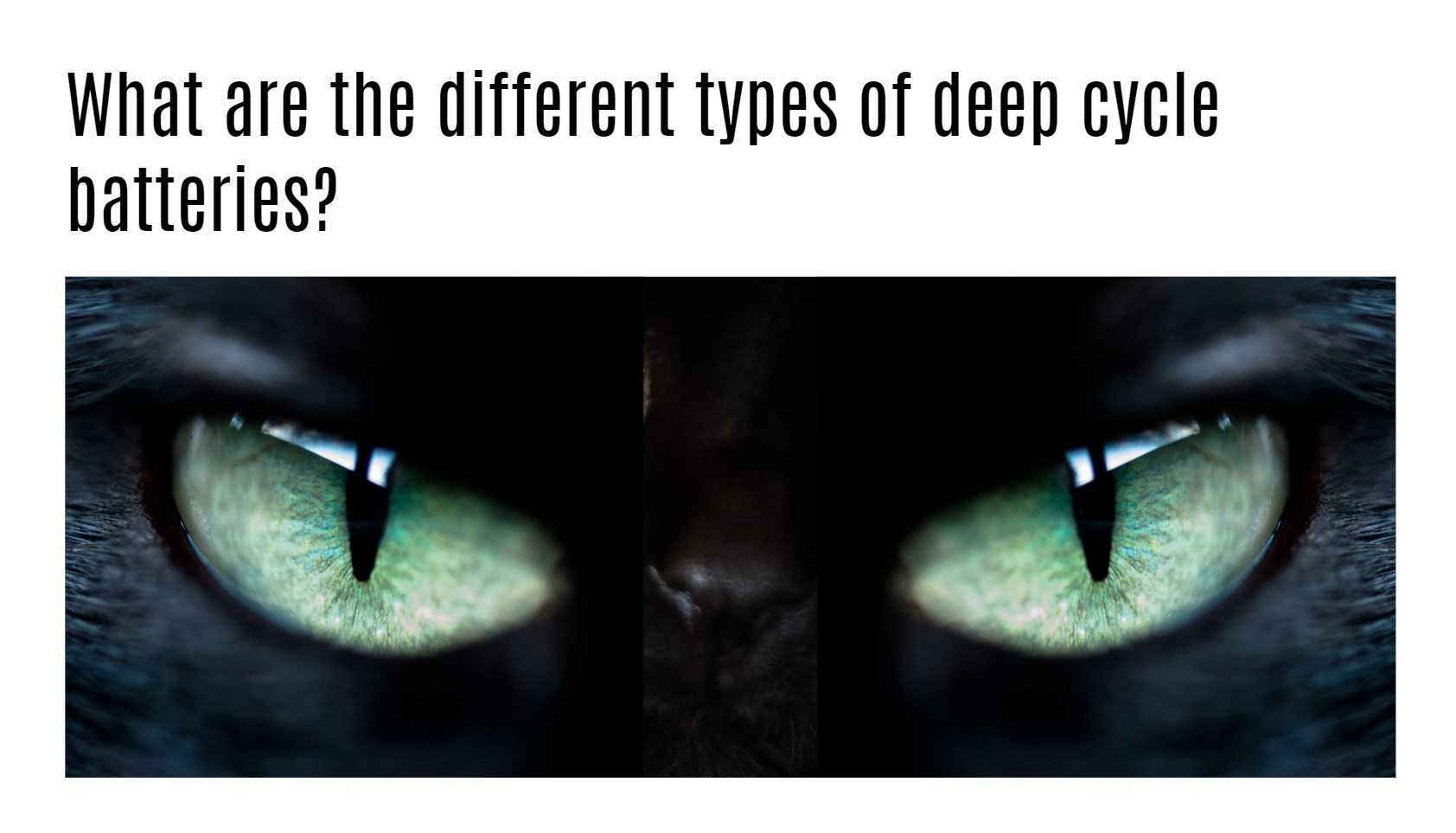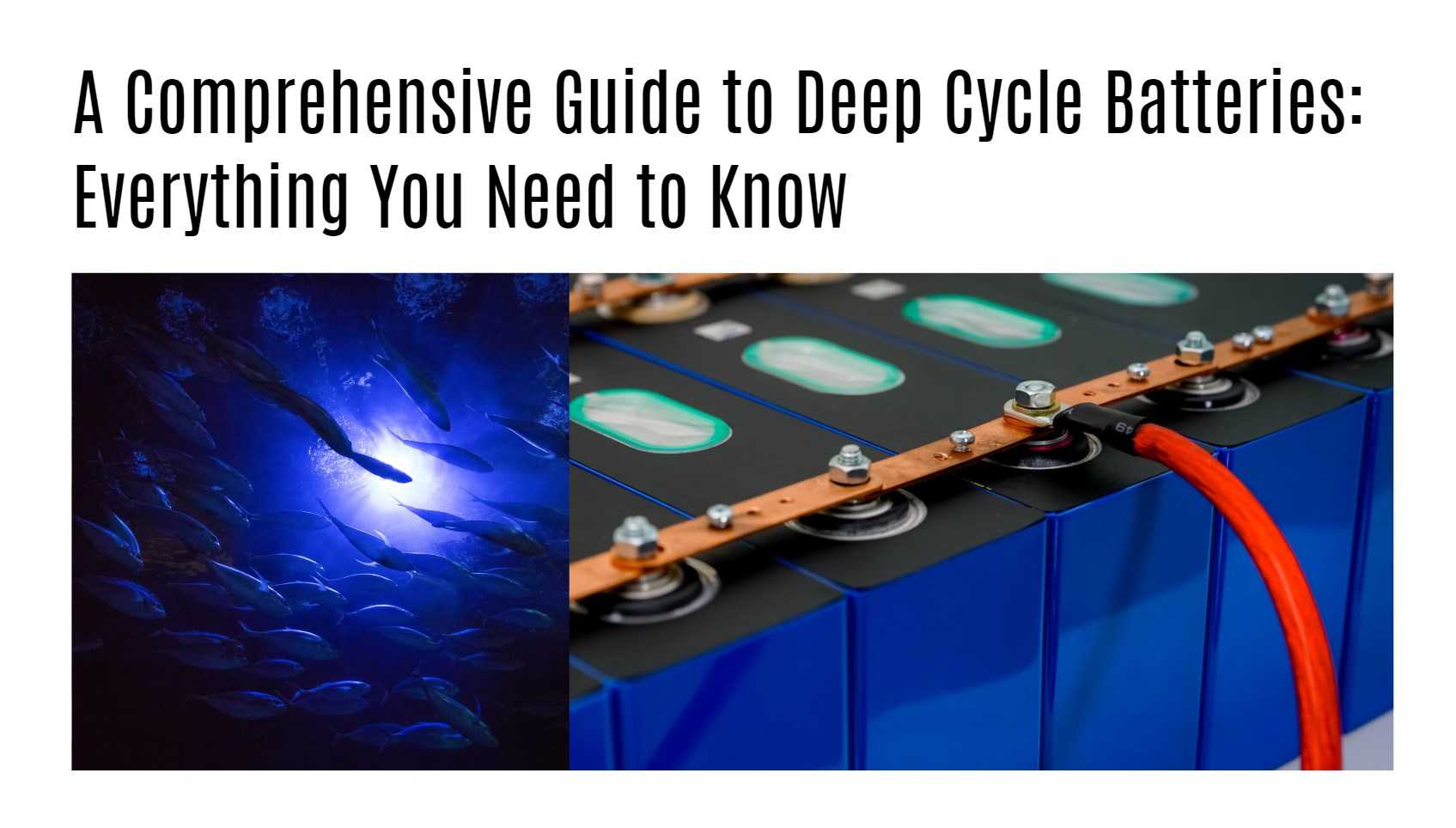Batteries are not all created equal. Depending on your specific needs, you may require a different type of battery. In this guide, we will explore deep cycle batteries in depth, understanding their functions and uses. We will also delve into the differences between lead-acid and lithium deep cycle batteries.
Deep Cycle Batteries vs Starter Batteries
Starter batteries are designed for short bursts of high power, mainly used to start up engines and then run on gasoline. They are not meant to be discharged extensively and doing so can harm their performance and lifespan. Deep cycle batteries, on the other hand, are marathon runners that provide a consistent supply of power over a longer period. They are used to run vehicles instead of gasoline. Dual-purpose batteries combine both starting and cycling capabilities, making them a convenient option for certain applications.
Deep Cycle Battery Discharge Capability
Deep cycle batteries can safely discharge a significant portion of their stored energy. The discharge capability varies depending on the battery, with some able to handle discharging up to 100% of their reserves. It is essential to check the manufacturer’s recommendation for your specific battery.
Uses of Deep Cycle Batteries
Deep cycle batteries are utilized in various applications that require continuous power for extended periods. Some common uses include electric golf carts, floor cleaning machines, scissor lifts, wheelchairs, scooters, forklifts, recreational vehicles, trolling motors on boats, navigational devices on boats, and renewable energy systems.
Types of Deep Cycle Batteries
There are several types of deep cycle batteries, each with its own advantages and disadvantages. The main types are flooded lead-acid batteries, gel and AGM batteries (valve regulated lead-acid or VRLA), and lithium-ion batteries.
1. Flooded Lead-Acid Batteries: The oldest type still in use, these batteries require regular maintenance, including adding water and cleaning acid residue. They are heavy and not as popular due to their maintenance requirements.
2. Gel and AGM Batteries: These lead-acid batteries do not have free-flowing liquid electrolytes and require no water addition. They eliminate spillage and corrosion issues, making them popular for marine and RV applications. However, they are more expensive and may not last as long as flooded batteries.
3. Lithium-Ion Batteries: Lithium batteries offer numerous advantages, including no maintenance requirements, deeper discharge capabilities, and faster charging. Although they have a higher upfront cost, their longer lifespan and other benefits make them a worthwhile investment in the long run.
Deep Cycle Battery Capacity
Lithium batteries have a higher capacity compared to lead-acid batteries, thanks to their chemistry. They can provide up to 100% of their rated capacity regardless of the discharge rate. In contrast, lead-acid batteries provide less usable energy at higher discharge rates. Lithium batteries also perform better in colder weather, with minimal capacity loss compared to lead-acid batteries.
Lifespan of Deep Cycle Batteries
The lifespan of a deep cycle battery depends on various factors. Lead-acid batteries are more susceptible to abuse, requiring proper maintenance and charging practices to maximize their lifespan. Improper watering, over-discharging, over-charging, and under-charging can significantly reduce the lifespan of a lead-acid battery. On the other hand, lithium batteries are less affected by these factors, but they can be damaged by severe over-discharging or charging at high currents in freezing temperatures. Additionally, high temperatures can degrade the lifespan of any battery.
FAQs
How do I know what size deep cycle battery I need?
- Understand Power Requirements: Calculate the total energy consumption and evaluate the power demands of the devices or equipment that will be using the battery.
- Evaluate Battery Types: Consider the advantages and disadvantages of flooded, AGM, and gel batteries to determine which type suits your needs best.
- Consider Capacity and Reserve Capacity: Assess the battery’s ampere-hours (AH) capacity and reserve capacity (RC) to ensure it can handle your power requirements and unexpected situations.
- Size and Dimensions: Check the battery’s dimensions and compare them to the available space in your application to ensure a proper fit.
- Depth of Discharge (DOD): Understand the specified DOD of the battery and avoid discharging it beyond its recommended level to preserve its lifespan.
- Charging and Maintenance: Follow proper charging and maintenance guidelines to ensure the longevity of the battery and invest in a high-quality battery charger.
- Budget and Brand Reputation: Consider the overall value and performance of the battery rather than solely focusing on the initial cost. Research reputable brands and read customer reviews for reliable products and customer support.
- Environmental Impact: If environmental impact is a concern, look for batteries designed with eco-friendly materials and recyclability.
What not to do with a deep cycle battery?
- Avoid Over-Discharging: Do not discharge a deep cycle battery beyond 80% to prevent damage and prolong its lifespan.
- Do Not Use for Starting: Using a deep cycle battery to start a boat is not recommended as it can significantly decrease the battery’s lifespan.
- Differentiate from Car Batteries: Understand the differences between deep cycle batteries and car batteries, as they are designed for different purposes and have different discharge characteristics.
- Amp-Hour Rating: Consider the amp-hour rating of a deep cycle battery, which indicates its capacity to deliver a certain amount of current over a specific period.
- Lifespan: The typical lifespan of a deep cycle battery is around three years with proper maintenance and charging practices.
- Marine Batteries: Be aware that marine batteries can be hybrid deep cycle and starting batteries, but they are not as efficient as using separate batteries for each purpose.
What is a downside of using deep cycle batteries?
- Shorter Lifespan: Deep cycle batteries typically have a shorter lifespan compared to other battery types, lasting around 2-5 years depending on usage and maintenance. This may require more frequent replacements, which can be inconvenient and costly.
- Higher Upfront Cost: Deep cycle batteries tend to have a higher upfront cost compared to regular lead-acid or automotive batteries. However, this cost reflects their quality, performance, and longer-lasting power.
- Regular Maintenance: Deep cycle batteries require regular maintenance to ensure optimal performance. Proper charging and discharging cycles, checking electrolyte levels, and cleaning terminals are necessary to prevent damage and maintain capacity.
- Limited Capacity and Power Output: Deep cycle batteries are designed to provide sustained energy over extended periods, but they have limited capacity and power output. They may not be suitable for high-power applications or devices that require quick bursts of energy.
Is it better to charge a deep cycle battery slow or fast?
- Trickle Charging: Trickle charging, a slow and continuous charging method, is generally ineffective for deep cycle batteries due to their lower discharge rate. It may not effectively maintain the battery’s charge level.
- Charging Speed: Charging the battery too quickly using conventional methods can permanently damage the deep cycle battery. It is advisable to charge the battery slowly to prevent overcharging and potential damage.
- Safety Considerations: Charging a deep cycle battery indoors can pose safety concerns. The battery may produce fumes that can accumulate and cause breathing issues. It is recommended to charge the battery outdoors or in a well-ventilated space to ensure safety and prevent hazardous situations.
Hot Questions and Answers for Lithium Battery Buyers:
1. What is the difference between a deep cycle battery and a starter battery?
Deep cycle batteries provide power for longer periods, while starter batteries supply high power for short bursts to start engines.
2. Can deep cycle batteries handle deep discharge?
Yes, deep cycle batteries are designed to handle deeper discharges compared to starter batteries.
3. What are the common uses of deep cycle batteries?
Deep cycle batteries are used in electric vehicles, recreational vehicles, boats, golf carts, and renewable energy systems.
4. What are the different types of deep cycle batteries?
The main types are flooded lead-acid batteries, gel and AGM batteries (VRLA), and lithium-ion batteries.

5. Do deep cycle batteries require maintenance?
Flooded lead-acid batteries require regular maintenance, while gel, AGM, and lithium-ion batteries are maintenance-free.
6. How long do deep cycle batteries last?
The lifespan depends on various factors such as battery type, usage patterns, and maintenance practices. It is best to consult the manufacturer’s specifications for an estimated lifespan.
7. Are lithium batteries worth the higher upfront cost?
Despite the higher initial investment, lithium batteries offer longer lifespans, faster charging, and deeper discharge capabilities, making them a cost-effective choice in the long run.
8. Can lithium batteries be used in all applications that require deep cycle batteries?
Yes, lithium batteries can be used in most applications where deep cycle batteries are required, offering superior performance and longevity.
9. How do deep cycle battery capacities differ between lead-acid and lithium batteries?
Lithium batteries have a higher capacity and can provide their rated capacity regardless of the discharge rate, while lead-acid batteries offer less usable energy at higher discharge rates.
10. Can deep cycle batteries be used in extreme temperatures?
Extreme temperatures, both hot and cold, can affect battery performance and lifespan. Lithium batteries generally perform better in extreme temperatures compared to lead-acid batteries, which may experience reduced capacity in colder conditions.




